b11030-1
Contents
Preface
b11030-2
1. Introduction
1.1 Definition
1.2 Importance of Shadows
1.3 Difficulty of Computing Shadows
1.4 Overview
1.5 General Information for the Reader
b11030-3
2. Basic Shadow Techniques
2.1 Projection Shadows
2.2 Shadow Mapping
2.3 Shadow Volumes
2.4 Stencil Shadow Volumes
2.5 Transparency
2.6 Summary
b11030-4
3. Shadow-Map Aliasing
3.1 Shadow Mapping as Signal Reconstruction
3.2 Initial Sampling Error—Undersampling
3.3 Resampling Error
b11030-5
4. Shadow-Map Sampling
4.1 Fitting
4.2 Warping
4.3 Global Partitioning
4.4 Adaptive Partitioning
4.5 View-Sample Mapping
4.6 Shadow-Map Reconstruction
4.7 Temporal Reprojection
4.8 Cookbook
b11030-6
5. Filtered Hard Shadows
5.1 Filters and Shadow Maps
5.2 Applications of Filtering
5.3 Precomputing Larger Filter Kernels
5.4 Summary
b11030-7
6. Image-Based Soft-Shadow Methods
6.1 Introduction
6.2 Basics
6.3 A Reference Solution
6.4 Augmenting Hard Shadows with Penumbrae
6.5 Blurring Hard-Shadow-Test Results
6.6 Filtering Planar Occluder Images
6.7 Reconstructing and Back-Projecting Occluders
6.8 Using Multiple Depth Maps
6.9 Summary
b11030-8
7. Geometry-Based Soft-Shadow Methods
7.1 Plausible Shadows by Generating Outer Penumbra
7.2 Inner and Outer Penumbra
7.3 Soft Shadow Volumes
7.4 View-Sample Mapping
7.5 Tradeoffs
7.6 Summary of Soft-Shadow Algorithms
b11030-9
8. Image-Based Transparency
8.1 Deep Shadow Maps
8.2 Approximating the Transmittance Function
8.3 Summary
b11030-10
9. Volumetric Shadows
9.1 Real-Time Single Scattering in Homogeneous Participating Media
9.2 Ray Marching a Shadow Map
9.3 Shadow-Volume–Based Approaches
9.4 Summary
b11030-11
10. Advanced Shadow Topics
10.1 Multicolored Light Sources
10.2 Multisample Antialiasing
10.3 Voxels and Shadows
10.4 Ray-Casting Shadows
10.5 Environmental Lighting
10.6 Precomputed Radiance Transfer
b11030-12
11. Conclusion
11.1 Hard Shadows
11.2 Filtered Hard Shadows
11.3 Soft Shadows
11.4 Advanced Methods
11.5 Welcome Tomorrow
b11030-13
A. Down the Graphics Pipeline
A.1 Rendering
A.2 Per-Fragment Processing—Culling and Blending
A.3 The Framebuffer
A.4 Geometry Representation
A.5 Hardware
b11030-14
B. Brief Guide to Graphics APIs
B.1 Transformation Matrices
B.2 State
B.3 Framebuffer and Render Targets
B.4 Texture Sampling
B.5 Shading Languages
b11030-15
C. A Word on Shading
C.1 Analytical Shading Models
C.2 Approximating Incoming Radiance
b11030-16
D. Fast GPU Filtering Techniques
D.1 Mipmap
D.2 N-Buffer and Multiscale Map
D.3 Summed-Area Table
D.4 Summary
b11030-17
E. More For Less: Deferred Shading and Upsampling
E.1 Deferred Shading
E.2 Upsampling
E.3 Summary
b11030-18
F. Symbols
b11030-19
Bibliography
b11030-20
Index

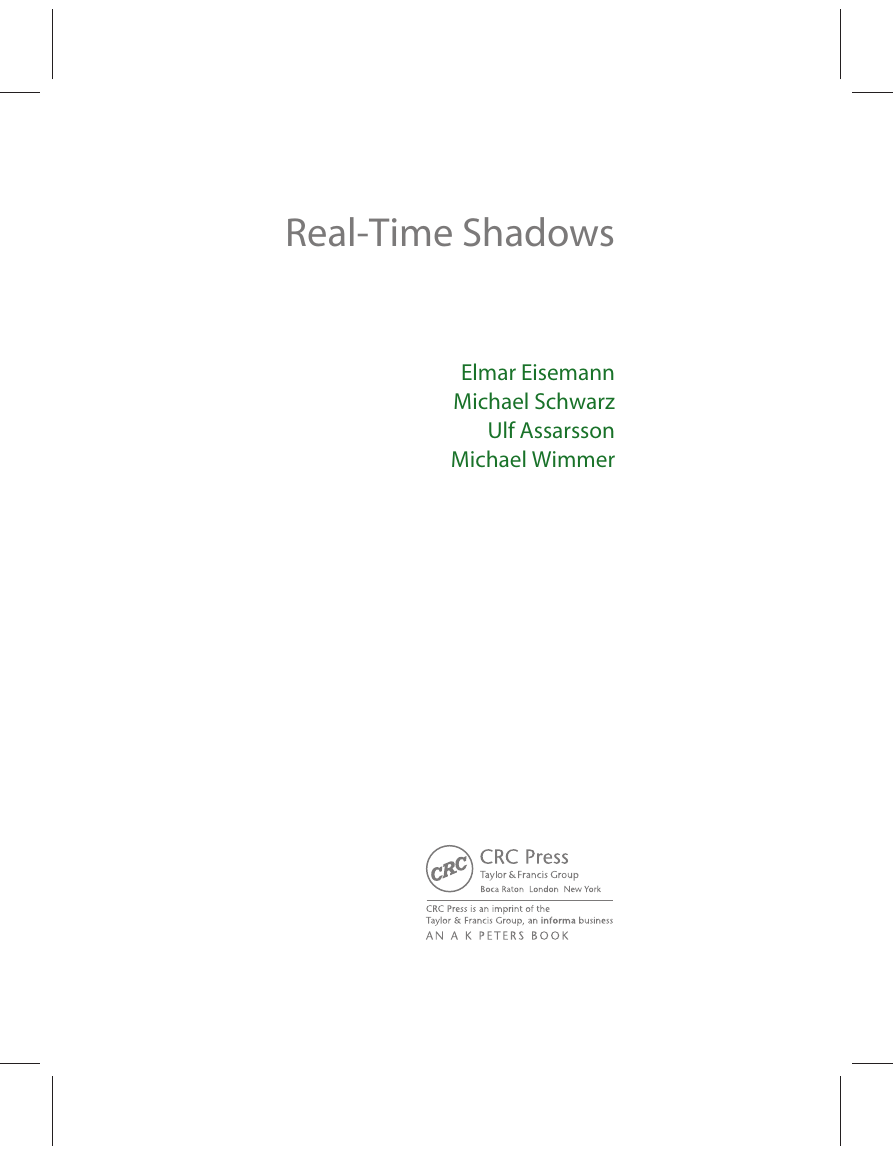
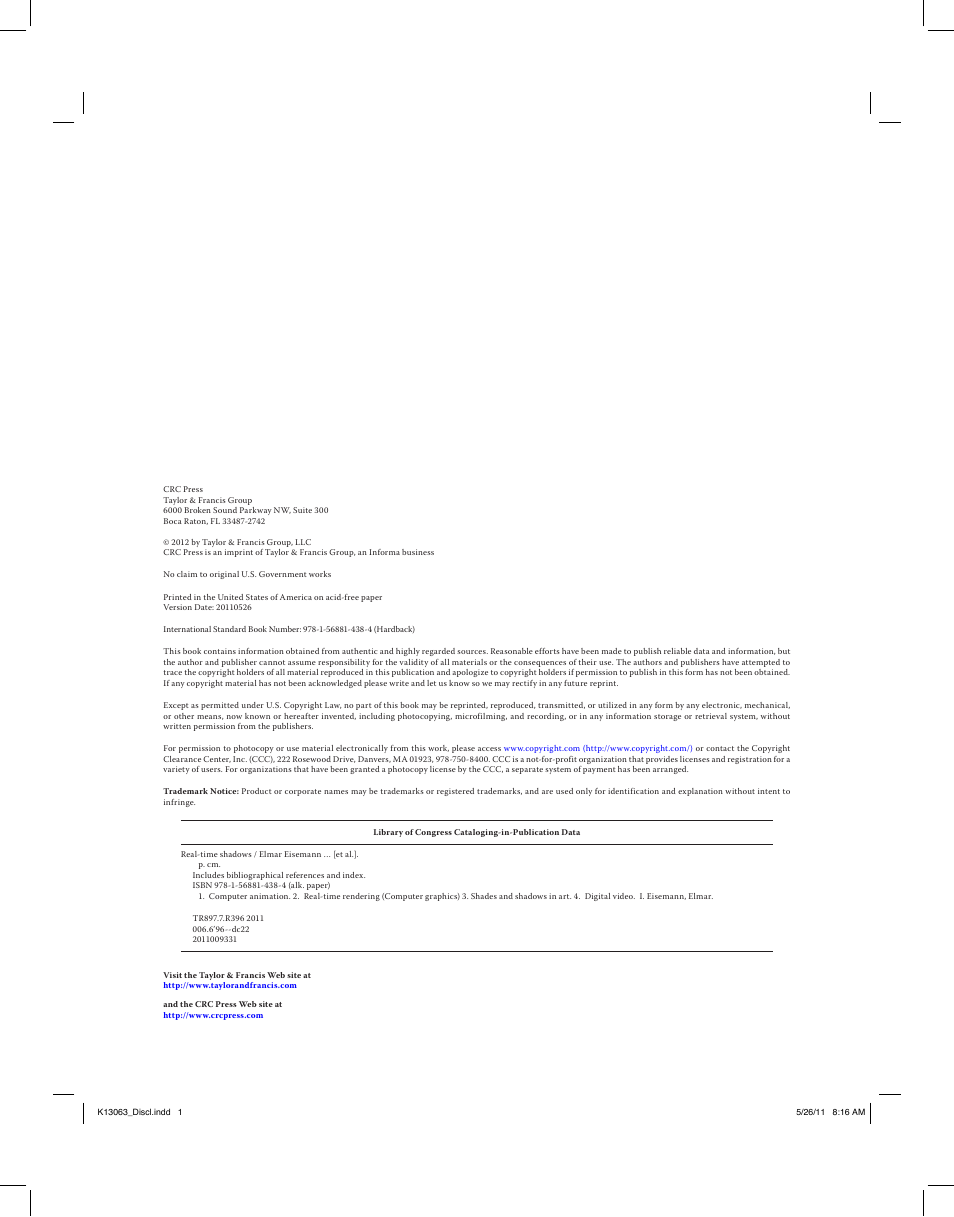
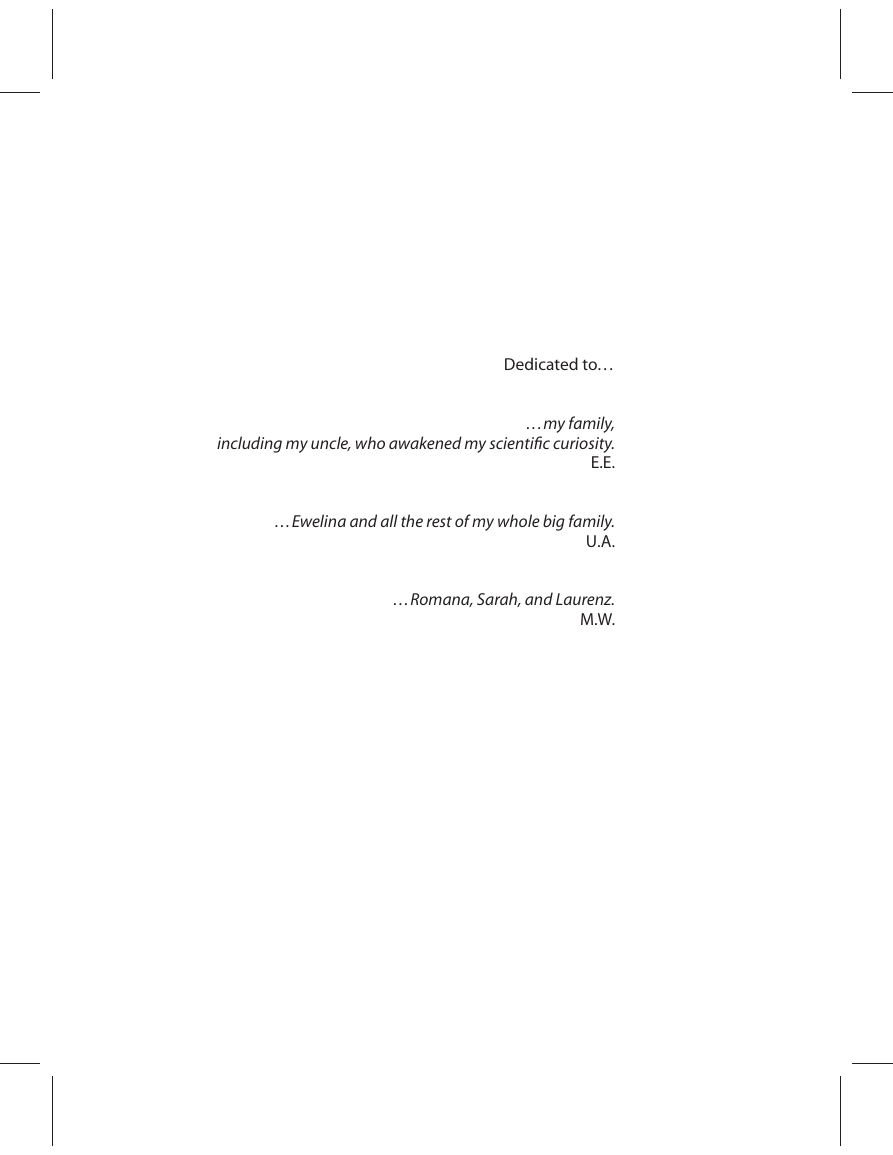
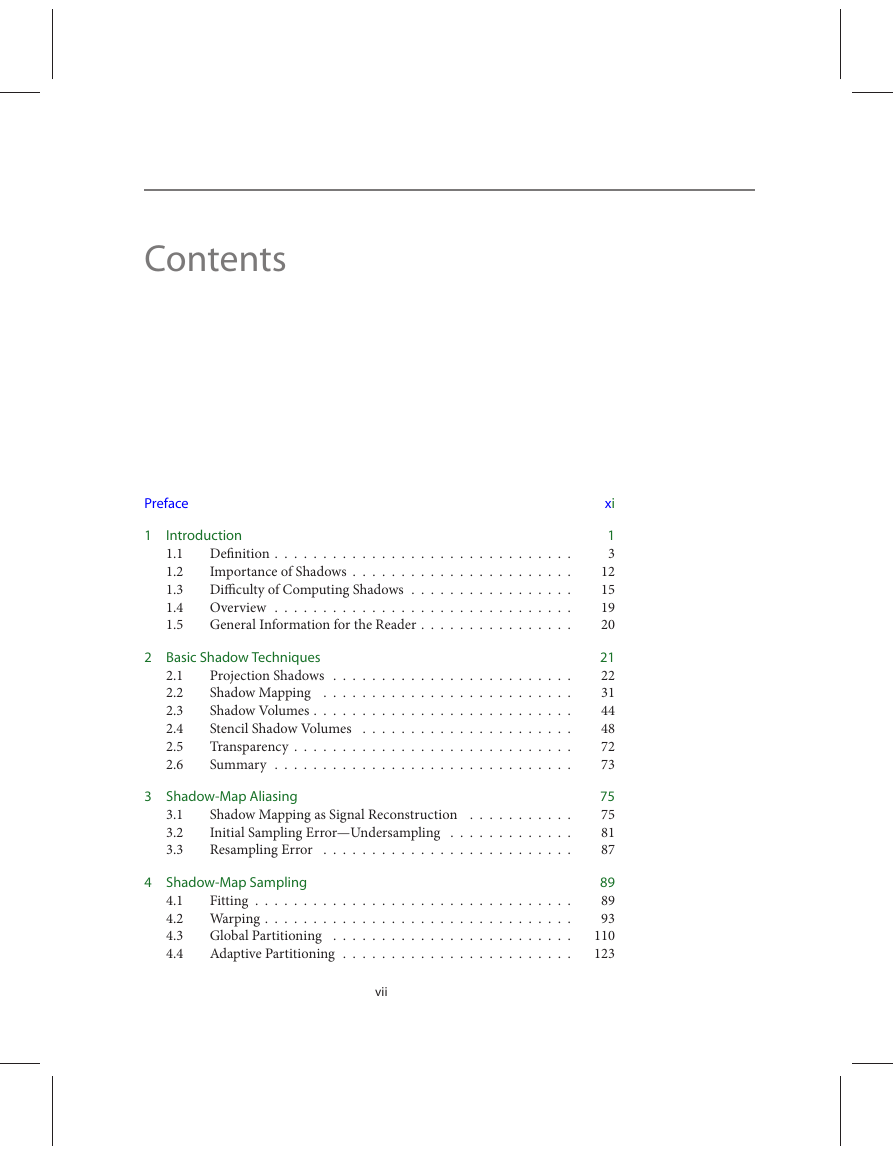

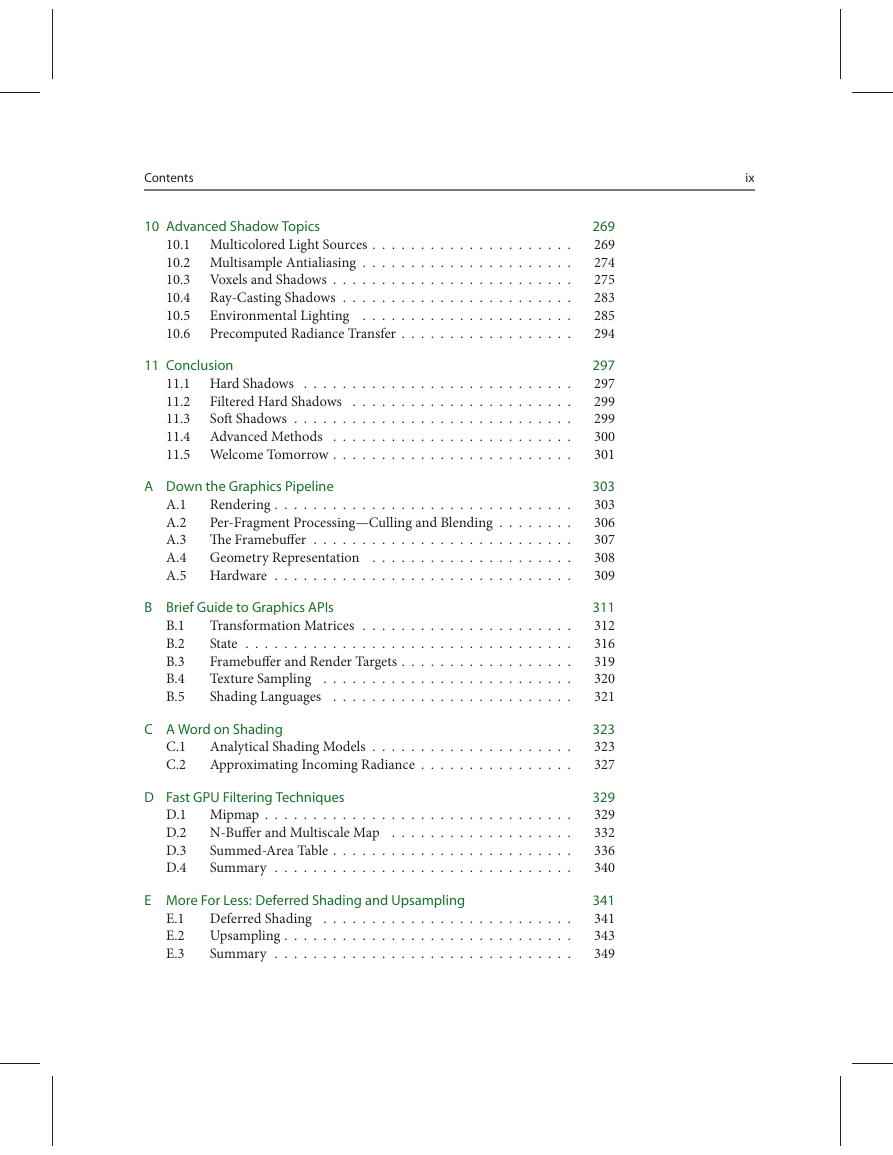









 2023年江西萍乡中考道德与法治真题及答案.doc
2023年江西萍乡中考道德与法治真题及答案.doc 2012年重庆南川中考生物真题及答案.doc
2012年重庆南川中考生物真题及答案.doc 2013年江西师范大学地理学综合及文艺理论基础考研真题.doc
2013年江西师范大学地理学综合及文艺理论基础考研真题.doc 2020年四川甘孜小升初语文真题及答案I卷.doc
2020年四川甘孜小升初语文真题及答案I卷.doc 2020年注册岩土工程师专业基础考试真题及答案.doc
2020年注册岩土工程师专业基础考试真题及答案.doc 2023-2024学年福建省厦门市九年级上学期数学月考试题及答案.doc
2023-2024学年福建省厦门市九年级上学期数学月考试题及答案.doc 2021-2022学年辽宁省沈阳市大东区九年级上学期语文期末试题及答案.doc
2021-2022学年辽宁省沈阳市大东区九年级上学期语文期末试题及答案.doc 2022-2023学年北京东城区初三第一学期物理期末试卷及答案.doc
2022-2023学年北京东城区初三第一学期物理期末试卷及答案.doc 2018上半年江西教师资格初中地理学科知识与教学能力真题及答案.doc
2018上半年江西教师资格初中地理学科知识与教学能力真题及答案.doc 2012年河北国家公务员申论考试真题及答案-省级.doc
2012年河北国家公务员申论考试真题及答案-省级.doc 2020-2021学年江苏省扬州市江都区邵樊片九年级上学期数学第一次质量检测试题及答案.doc
2020-2021学年江苏省扬州市江都区邵樊片九年级上学期数学第一次质量检测试题及答案.doc 2022下半年黑龙江教师资格证中学综合素质真题及答案.doc
2022下半年黑龙江教师资格证中学综合素质真题及答案.doc